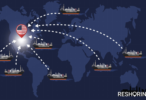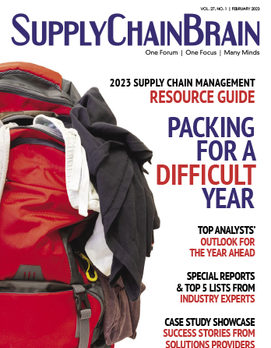
Think Tank
The Pros and Cons of ‘Friend-Shoring’ Production

Photo: iStock.com/SweetBunFactory
The multiple crises of the past few years are pushing American businesses to seek better market conditions by relocating production and sourcing. One possibility is a reliance on “friend-shoring,” or the placement of manufacturing in countries with shared values. While there’s no official definition of who qualifies as a "friend," examples include the European Union, United Kingdom, Japan and South Korea. The U.S. is also seeking to broaden the list by introducing new regional initiatives such as the Indo-Pacific Economic Framework for Prosperity, and the recent U.S.-Africa Leaders Summit. This approach signals a shift toward trust-based partnerships over purely economic factors in global supply chain management.
But will this new approach benefit organizations? It's time for decision-makers around the globe to weigh how friend-shoring could reshape their supply chain operations – and their businesses.
The Pros and Cons
Friend-shoring presents exciting opportunities for businesses. Companies could gain a competitive edge by improving customer access and establishing better reputations within their target markets.
Yet this newfound advantage may also have consequences. International trade could decline, causing a domino effect on transportation patterns. For instance, fewer goods being imported from Southeast Asia could lead to more empty containers in that trade, while increasing the need for capacity between U.S. East Coast ports and those in India or Europe.
Friend-shoring may only be suitable for some businesses. Those who rely heavily on overseas suppliers or have complex or highly regulated supply chains, for example, might find it too costly or difficult to implement. To make an informed decision, businesses should consider several factors:
- Cost. Before any change in operations, businesses need to carefully consider the costs associated with relocating production, and any financial and operational impacts on the supply chain. To identify potential risks, they need to analyze spend concentration per supplier and region. If a large percentage of spend is concentrated in an unfriendly or unstable part of the world, this could pose a significant threat to the business in the long term.
- Geopolitical risks. Companies must evaluate whether friend-shoring will be beneficial in terms of trade relations, tariffs and other regulatory requirements that may exist between the countries involved.
- Regional accessibility. Availability of key or critical components needs to be considered; if those components aren’t readily available from local suppliers, it might not be viable to friend-shore. Businesses should also assess what they’re buying from suppliers, and where the opportunities lie for re-sourcing these items locally.
- Product quality, inventory and logistics. Quality should be top of mind, so companies need to ensure that new suppliers can meet their standards before embarking on the process of friend-shoring. Proper planning of inventory levels is essential so that operations aren't starved, or too much capital isn't tied up in inventory. Last, logistics and freight forwarding considerations must be considered; businesses must evaluate how goods will get from point A to point B in a cost-effective manner.
- ESG. It’s also important to consider environmental, social and governance (ESG) concerns. For instance, auto manufacturers know that battery production for electric vehicles has a significant environmental impact due to the mining process of raw materials, and would source accordingly.
There are common blind spots that need to be considered when implementing a new strategy like this. They include overlooking potential regulatory changes, and failing to plan for unexpected disruptions in production due to unforeseen circumstances such as natural disasters.
The Less Expensive Option?
Companies need to conduct a cost-benefit analysis for each product, on a case-by-case basis. The ecosystem for each varies, with pros and cons distributed differently among friendly and unfriendly countries. However, business leaders might be pleasantly surprised to learn that friend-shoring can reduce costs instead of being the more expensive option, as long as it’s implemented correctly.
One surprising benefit of friend-shoring is that it can reduce time and transit expenses. For instance, getting raw materials from the EU may take less time than from Southeast Asia. Additionally, East Coast ports are currently less backed up than West Coast ports.
Friend-shoring may also help reduce inventory levels, thereby reducing capital tied up in inventory. The reduction in shipping costs associated with the strategy could provide further savings. Even if executed at a cost-neutral level, friend-shoring might still be considered a win, since it reduces risk within the supply chain.
Business leaders must consider all aspects of friend-shoring before implementing the strategy. While there are potential benefits such as cost savings and reduced risk within the supply chain, there are also common blind spots that must be addressed beforehand. With proper planning and execution, friend-shoring could be an effective way for businesses to optimize their operations while reducing costs and risk.
Matt Stekier is a principal with Plante Moran.




